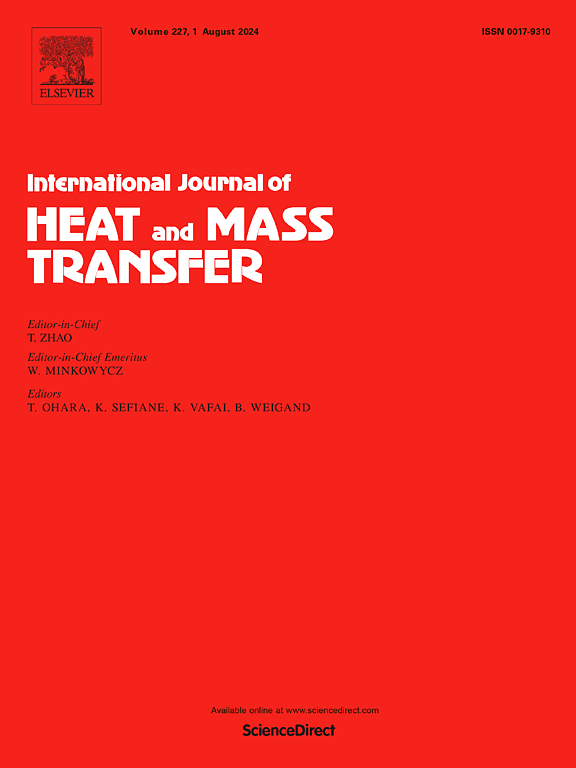Thermal runaway behaviour of a cylindrical lithium-ion battery during charge and discharge processes: A comprehensive numerical study
IF 5.8
2区 工程技术
Q1 ENGINEERING, MECHANICAL
International Journal of Heat and Mass Transfer
Pub Date : 2024-11-28
DOI:10.1016/j.ijheatmasstransfer.2024.126499
引用次数: 0
Abstract
Lithium-ion batteries (LIBs) may experience thermal runaway (TR) accidents during charge and discharge processes. To ensure the safe operation of batteries, it is very important to analyse the TR characteristics during charge and discharge processes. In this work, we have developed a coupled electrochemical thermal (ECT) – TR (ECT-TR) model for a commercial 18,650 type 2.6 Ah NCM523/graphite battery. This model allows for the examination of TR features under different ambient temperatures, effective heat transfer coefficients (h), and C-rates during both charge and discharge processes. We first analysed the temporal evolution of the battery's surface center temperature and the heat generated by chemical reactions under a spectrum of environmental variables. Subsequently, we introduce a battery risk map that delineates distinct zones, including the safe zone, battery chemical reaction zone, battery failure zone, and TR zone, across varying environmental conditions. The results suggest that the battery's TR risk during the charge process exceeds that during the discharge process, with both exhibiting reduced risk compared to that during the cycle process. However, it is noteworthy that the risk of accelerated battery aging due to chemical reactions is more pronounced in the discharge process compared to the charge process.
圆柱形锂离子电池在充放电过程中的热失控行为:综合数值研究
锂离子电池在充放电过程中容易发生热失控事故。为了保证电池的安全运行,对电池充放电过程中的TR特性进行分析是非常重要的。在这项工作中,我们开发了一种用于商用18650型2.6 Ah NCM523/石墨电池的电化学热(ECT) -TR (ECT-TR)耦合模型。该模型允许检查不同环境温度下的TR特征,有效传热系数(h),以及充放电过程中的c率。我们首先分析了在一系列环境变量下电池表面中心温度和化学反应产生的热量的时间演变。随后,我们引入了一个电池风险图,描绘了不同环境条件下的不同区域,包括安全区、电池化学反应区、电池故障区和TR区。结果表明,电池在充电过程中的TR风险大于放电过程中的TR风险,且两者的风险均低于循环过程中的TR风险。但值得注意的是,与充电过程相比,电池因化学反应而加速老化的风险在放电过程中更为明显。
本文章由计算机程序翻译,如有差异,请以英文原文为准。
求助全文
约1分钟内获得全文
求助全文
来源期刊
CiteScore
10.30
自引率
13.50%
发文量
1319
审稿时长
41 days
期刊介绍:
International Journal of Heat and Mass Transfer is the vehicle for the exchange of basic ideas in heat and mass transfer between research workers and engineers throughout the world. It focuses on both analytical and experimental research, with an emphasis on contributions which increase the basic understanding of transfer processes and their application to engineering problems.
Topics include:
-New methods of measuring and/or correlating transport-property data
-Energy engineering
-Environmental applications of heat and/or mass transfer

 求助内容:
求助内容: 应助结果提醒方式:
应助结果提醒方式:


